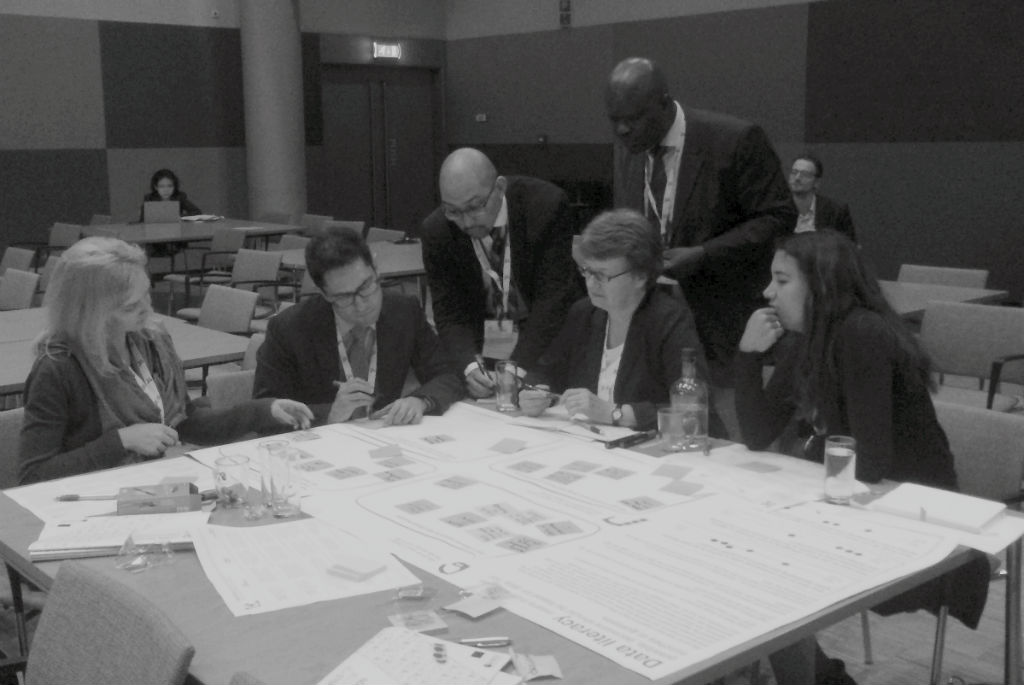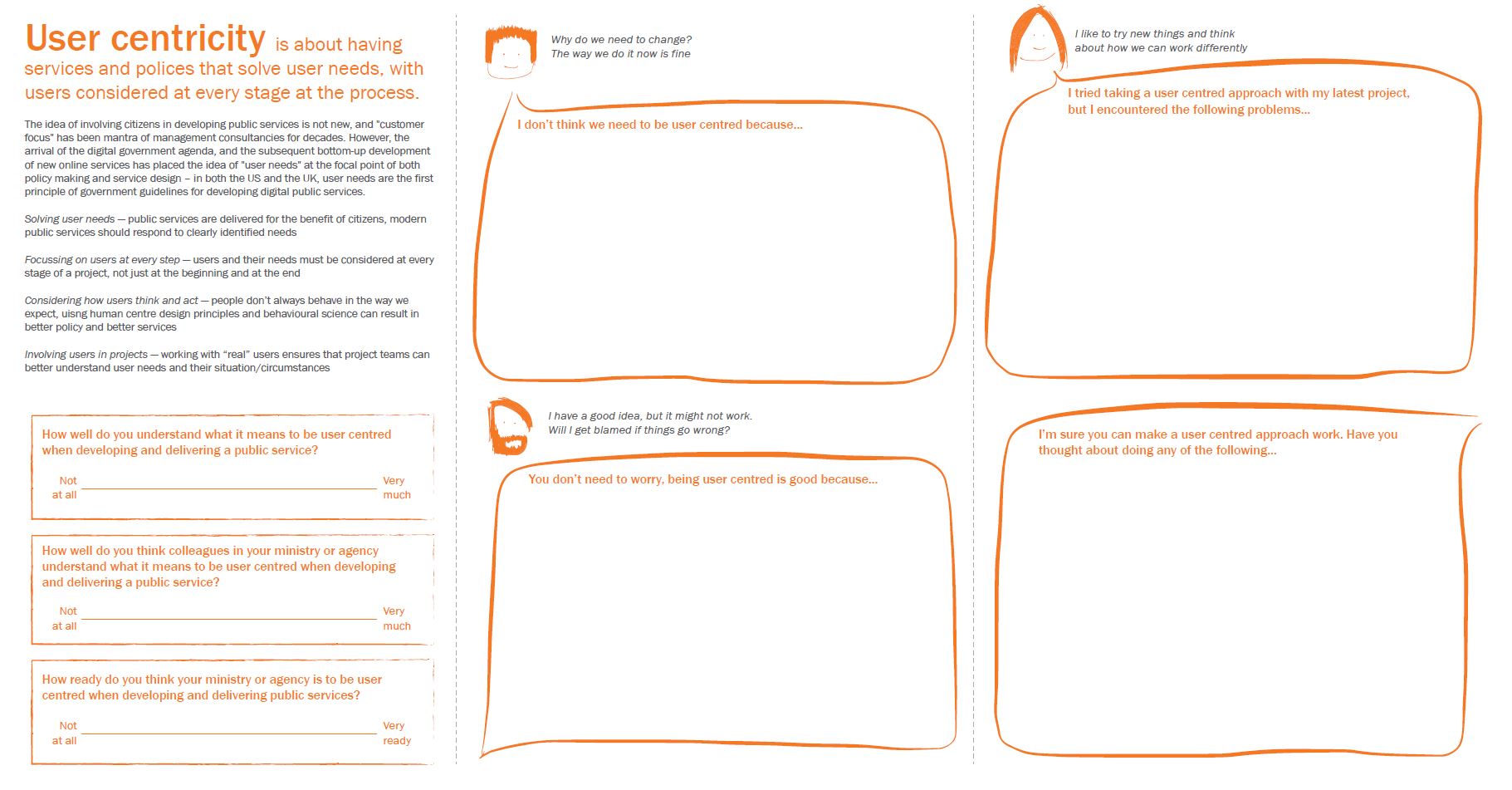Exploring innovation skills: how can we put them into use?

This blog was authored by former OPSI Policy Analyst, Matt Kerlogue
In my previous blog post, I set out the OPSI’s beta model of skills for public sector innovation, structured around six skill areas: iteration, data literacy, user centricity, curiosity, storytelling and insurgency. But providing an outline and description of these six areas is hardly sufficient to enable the uptake of these skills. Our work to develop the skills model, alongside the Observatory’s wider work on public sector innovation and colleagues’ work on public employment, highlights that organisational context and culture is a strong factor in determining the adoption of innovation skills. Alongside the model we have also developed a workshop to help explore the enablers and barriers to using innovation skills within organisations.

The workshop is designed to be a simple activity that anyone can run in their organisation/setting to explore the six innovation skills areas identified in our model – you can choose to look at all six, or only those you are specifically interested in. The workshop has five steps, grouped into an introduction and two exercises (each with two steps). Before launching the exercises you should start with a short 10-15 minute presentation about the six innovation skills areas. The first exercise is designed as a warm-up/familiarisation to the six skill areas while the second exercise then looks in detail at the skill area to identify enablers and barriers.
We have run the workshop in a number of settings, most recently at the UN Public Service Forum 2017 a few weeks ago in The Hague. Now we would like to share the format and materials with you so you can run it yourself in your organisation to think about how skills for public sector innovation can be put to use in your organisation.
Quick links
Preparing for the workshop
To prepare for the workshop, you will need:
- Prints of the posters – they are designed to be printed large-format (1609mm x 841mm) either for use as a table-top or fixed to a wall. If you do not have access to a large-format printer/plotter or a reprographics service then Adobe Reader can print each poster using 12 sheets of A3. There is one poster for each skill area.
- Stickers – each workshop participant needs three stickers for the first activity
- Pens – make sure you have enough pens for each participant, we prefer a felt-tip/medium-thickness marker pen to ballpoint pens
- Post-It notes – because you can’t have an innovation workshop without Post-Its! (Actually you can). We find it easier to run the workshop with Post-It notes rather than having participants write directly on the worksheet.
- Flipcharts – optional, but may be useful for capturing general thoughts that come up during the exercises, or for use in the feedback/summary sessions
- Time to set up the room.
- In addition to yourself, depending on the number of participants you may want one or more people to help facilitate the group sessions (including a timekeeper).
In addition to materials you should also take some time to think about how you will run the workshop, in particular the timing of the different steps: how much time for group activities, how much time for feedback, do you want a group to only focus on one skill area or to repeat the exercises for a second skill area. The format is highly adaptable; however, as the absolute minimum we would recommend 90 minutes. The 90 minutes for a minimum session length should be divided as follows: 10 minutes for the introduction; 30 minutes for exercise 1; 45 minutes for exercise 2; and, 5 minutes for a summary at the end.
Before you run the workshop you should also think about how you want to divide up participants amongst the different skill areas. If using the posters as table-top worksheets, do you want to allocate seating, or just let people sit at which ever table they want when they come in? Alternatively, and particularly if having posters fixed to the walls, you can assign people to different skill areas after you do the introductory presentation or let them choose a skill area. When splitting participants into groups try to make sure each group is a similar size, we prefer groups of 6-8 people per group.
The posters and simple playbook for the exercise can be downloaded from Dropbox.

Exercise one
After a brief introduction to the workshop and providing a brief overview of the six skill areas, the first activity is designed as a warm-up/familiarisation exercise.
The poster gives a high-level overview of the skill area and what it involves, but you may also want to provide some copies of the relevant page from our skills report that describes the different capability levels of the skill area to give some further information.
The main activity in this exercise is to answer three “mini-polls” at the bottom left-hand corner of the worksheet on using the skill area for the development and delivery of public services. The first of these questions asks participants about their own understanding; the second question asks about their colleagues’ understanding; while the third question asks participants about the readiness of their organisation overall, to make use of the skill area.
As part of this activity, you should encourage the groups to discuss their skill area: what do they think about it, what interests them, what concerns them, where is this skill area already being used, where else could it be used within the organisation? You may want to provide a flipchart/blank paper for the groups to note down some key thoughts and reflections. Five minutes before the end of the activity you should remind groups to complete the “mini-polls” and to select someone to report the conversation back to the rest of the participants.
After the group activity has completed you should hold a short report back session to close the activity. Each group should select a rapporteur during their discussion that can provide a short summary of the poll results and conversation from their group. If time limited, i.e. with six groups and only 10 minutes for feedback, ask the rapporteur to focus on the one/two key messages from the discussion. If you have more time you may want to record some of the key points from each group on a central flip-chart and invite reflections/discussions from other participants too.
At a minimum you should allow 15-20 minutes for the activity, and 10-15 minutes for reporting back.
Exercise two
The second exercise is the substantive element of the workshop, which is designed to draw out insights about how innovation skills can be used in an organisation, and what enablers and barriers there are. To do this, the exercise is structured around three personas: someone who doesn’t see innovation as important, someone who is interested in innovation skills but worried about using them, and someone who has tried to use innovation skills in a recent project. Participants should be invited to think about each of these personas as colleagues in their organisation, what would this person say or think if they were in their organisation?
With the first persona, someone who doesn’t see innovation as important, participants are invited to think about what arguments this person would put forward to explain why you don’t need to use innovation skills. The poster has a speech bubble from this person starting with “I don’t think we need to use [iterative approaches] because…”, using Post-It notes participants should try and complete the sentence. If this was a colleague in their organisation, what might they say to justify not using innovation skills? The purpose of this persona is to think about the automatic aversions some people can have to trying out new things, and to understand the drivers behind why they say or think those things. By understanding these reactions and their underlying causes we can start to understand some of the complexities that inhibit the adoption of innovative approaches.
For the second persona, someone who is interested in innovation skills but worried about using them, participants are invited to think about how we can encourage people to try new things and adopt new approaches. The poster has a speech bubble going towards the person from someone else, if this person was one of our colleagues, or we were their manager, what would we say to explain the benefits of using innovation skills? Here participants are invited to complete the sentence “You don’t need to worry, using [iterative approaches] is good because…”. The purpose of this persona is to understand the motivating factors, what is appealing about these skills, what are the benefits of using them?
The third person is someone who has tried to make use of innovation skills in a recent project. This persona has two speech bubbles for participants to complete. In the first speech bubble the persona is explaining that they came across some problems in their recent project, they start with “I tried using [an iterative approach] with my latest project, but I encountered the following problems…”. If they were a colleague of yours what problems might they run into when trying to use the different innovation skills when undertaking a project in your organisation. Here the exercise is trying to elicit the range of issues and barriers that staff might encounter when adopting innovation skills. The second speech bubble for this persona is directed towards the persona from someone else and is offering advice and suggestions to overcome the problems that the persona has just listed. Participants are invited to complete the sentences “I’m sure you can make an iterative approach work. Have you thought about doing any of the following…”. If someone you were talking to in your organisation listed the barriers identified in the preceding activity what suggestions might you give as ways to overcome those barriers. The purpose of this final activity is to identify enabling activities, “quick-wins” that can unlock small problems, but also bigger strategic changes that might need to be put in place to transform the systems and culture of the organisation to better support public sector innovation.
At key intervals you should check the progress of the groups and remind them to move on to the different personas (as relevant). Towards the end of the activity remind the groups to select a rapporteur to provide a brief summary of their discussions during the feedback.
At a minimum you should allow 45 minutes for the exercise, 30 minutes for the activity and 15 minutes for feedback. We would recommend at least an hour for the exercise, 40 minutes for the activity and 20 minutes for feedback. However, we suggest you think carefully about the feedback element for this stage to ensure it gives ample time to discuss the different issues that might be raised, e.g. providing time for open discussion after feedback from the groups. You should also consider using a flipchart to help record key points that come up during the feedback from groups and discussions. Depending on circumstances, you may want to identify tasks and owners to take away an act on the outcomes of the workshop. If time is limited, then the feedback from groups should emphasise points from the third persona (barriers and solutions).
Summing up
You should finish the workshop with a plan for how the findings from the workshop will be used. If doing as an isolated exercise within in a team/division, which will be responsible for following up on key actions agreed. Or if this the workshop is being done as part of a series that are being repeated with other participants from elsewhere in the organisation, who is collating the results from each workshop, what will they do with it, where can people find out more.
Do it yourself
Thinking about how to encourage innovation in your organisation, then why not run a workshop with your team or in your organisation? We would be happy to help others run the workshop in their setting, and to learn from your experiences too, for example by having you share your experience as a guest post on our blog. Get in touch!












